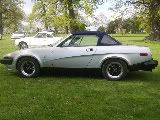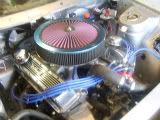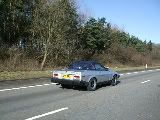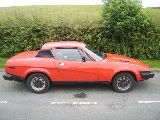<blockquote id="quote"><font size="1" face="Century Gothic, Verdana, Arial, Helvetica" id="quote">quote:<hr height="1" noshade id="quote"><i>Originally posted by tencate</i>
Ah, you might be right about the anti-lock although I've seen a couple of SAE papers a few years back which indicate that modern systems now can do better than a skilled person in most cases---although I confess I don't know what current state of the art is. I'll post a link to them if I can find them and you can read for yourselves and decide what you think.

<hr height="1" noshade id="quote"></font id="quote"></blockquote id="quote">
Modern ABS's would be all 4 channel ones, old systems would be 3 channel (2 front wheels and 1 rear or diff).
Abs work great when you get a brain fart. And good portion of "drivers" , if you can call them that way because they have the license but they dont know how to drive, use their cars to get from point A to point B without using their brain too much.
You can't be 100% concentrated all the time to be able to outperform an (modern) ABS. Atleast most people arent.
As Hasbeen said bigger advantade of ABS is how it affects steerability and stability of a car under hard braking, wet tarmac, snow, ice, potholes, ever tried to brake while crossing a manhole or streetcar tracks, every situation where you have large difference in friction between tires and surface.
But if your main concenr is shortening the stopping distance.... get better tires...
Every single type of brakes, even the worst ones, can lock up the wheels atleast once, that means that they can generate enough braking torque to stop the car.
Its just up to the tires then to stop the car or lock up and slide.
To get back on topic.
Does anybody know whats the pressure ratio between front and rear brakes on a TR?
Why not just connect the front brakes directly to the front calipers, and rear with a brake pressure relieve valve to set rear brake pressure in a ratio to main brake cyilinder?
Main brake cylinder for front and rear are the same diameter so there's no difference there.
Advantage of having front brakes connected directly to master brake cylinder is there's no element to reduce the pressure in the front system. You then modulate the brake pressure with your foot, not some gizmo in the hydraulic circuit.




